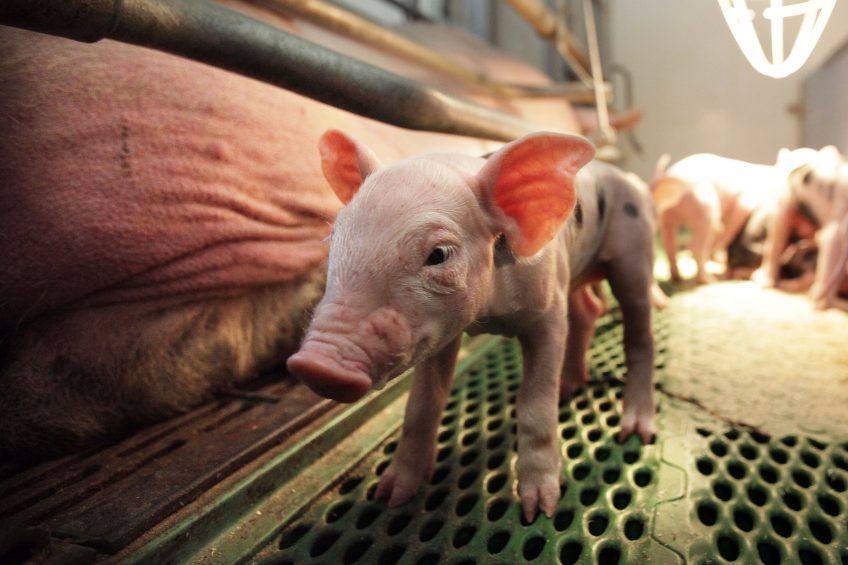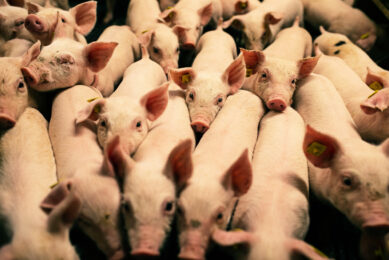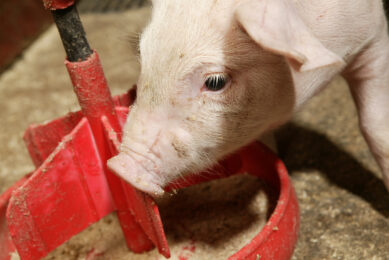Expanding the reach of flavour imprinting

An aroma, based on essential oils, is capable of generating an imprinting effect in piglets that can boost their introduction to solid feed after weaning and improves their performance. Combining this with spray dried porcine plasma could bring even further benefits post-weaning.
Early weaned piglets are subject to a great deal of stress and have to adapt abruptly to a new diet, which delivers a great physiological challenge. As a result, during the first week after weaning, piglets typically have a low feed intake and a growth decrease that has an impact on the animal’s gut morphology, increasing the risk of post-weaning diarrhoea and consequently affecting the animals subsequent performance.
Supplementing sow and post-weaning diets with Print-Arome, a flavour formulated with essential oils, has an imprinting effect in piglets. This effect familiarises the piglets with its scent and facilitates the introduction to solid feed. The transfer of dietary information from mother to offspring with the essential oils flavour has been proven to successfully improve feed intake and weight gain of piglets at weaning. Likewise, spray dried porcine plasma (SDPP) is also a common feed ingredient used for similar objectives; included in weaning diets to improve feed intake, post-weaning performance and reduce diarrhoea incidence.
To expand on this, Norel set out to test if the imprinting effect was able to further improve the performance and health parameters of early weaned piglets on a basal diet with SDPP. A trial was determined to assess if flavour conditioning through the sow diet could improve the post-weaning performance, gut morphology and the incidence of post-weaning diarrhoea in piglets receiving a diet containing SDPP.
On farm field trials
The trial was carried out in a commercial farrow to nursery farm located in Huesca, Spain. Under standard commercial field conditions, a total of 21 pregnant sows were included in the study. The breeds used were:
- Sira x Large White (Duna; 19 sows)
- Large White x Landrace x Duroc (Sira; 1 sows)
- Landrace x Tai Zumu (Youli; 1 sows)
Duna and Youli sows were inseminated with Pietrain males and Sira sows were inseminated with Large White males. At 21 days a total of 235 piglets were weaned from the included sows.
11 and 10 sows were offered unflavoured or flavoured diets, respectively,during the last 2 weeks of gestation and lactation. Litters were also offered unflavoured or flavoured creep-feed from 8 days of age until weaning according to the sow treatment. At weaning, the piglets were distributed to 2 treatments (also according to the previous treatment) for 1 week.
- Treatment one (T1) were fed a starter feed with 3% SDPP.
- Treatment group two (T2) were fed a starter feed with 3% SDPP and the addition of 375 g/t of Print-Arome.
The average measurements on gut morphology at the 3 sampling locations (duodenal, jejunal and ileal sections) and pH measurements were analysed. The piglets conditioned with Print-Arome (T2) presented numerically higher ADFI during lactation (3.4 vs. 4.2 g/day) and the first week after weaning (105.1 vs. 117.0 g/day), see Figure 1.
Figure 1 – Average daily feed intake (0-7 days) in both treatment groups.

Average daily gain of T2 piglets during the first week post-weaning was 21.5 g/day significantly higher than T1 (46.9 vs. 68.4 g/day), see Figure 2.
Figure 2 – Average daily gain (0-7 days) in both treatment groups.

The final body weight of T2 piglets were 150 g significantly higher than T1 at 7 days post-weaning (5.2 vs. 5.3 Kg), see Figure 3.
Figure 3 – Bodyweight at 7 days post-weaning.

There were no significant differences in the histological assessment of the small intestine among treatments. However, the flavour conditioned piglets had numerical higher villus at day 3 and 8. The average villus height observed in the T2 treatment was maintained within the controlled period while T1 decreased, although this progression was only numerical. There were no differences on villus crypt ratios at 3 and 8 days. The stomach pH in T2 piglets was 1.5 points significantly lower at day eight compared to T1 although no differences were measured in the small intestine pH.
Post-weaning diarrhoea incidence
The piglets that had pre and postnatal exposure to the flavour presented an overall lower diarrhoea incidence during the first week post-weaning. The recorded incidence was 19.8% lower than T1 group with a significant 3.8 lower odds ratio.
The inclusion of the flavour product in sow and piglets diets (end of gestation, lactation and first week post-weaning) numerically improved the piglets’ creep feed intake during lactation and starter feed intake. Also in the first week post-weaning, those piglets which were fed the supplement also had a significantly improved ADG and final body weight. Considering the trial results, it can be concluded that flavour imprinting was able to substantially improve the performance and health of piglets on a diet containing SDPP.











